"Make hay while the sun shines”
By developing systems that collect resources when they are abundant, we can use them in times of need.
This icon for this design principle represents energy being stored in a container for use later on, while the proverb “make hay while the sun shines” reminds us that we have a limited time to catch and store energy.
Check out more awesome stuff from Charlie Mgee and Formidable Vegetable
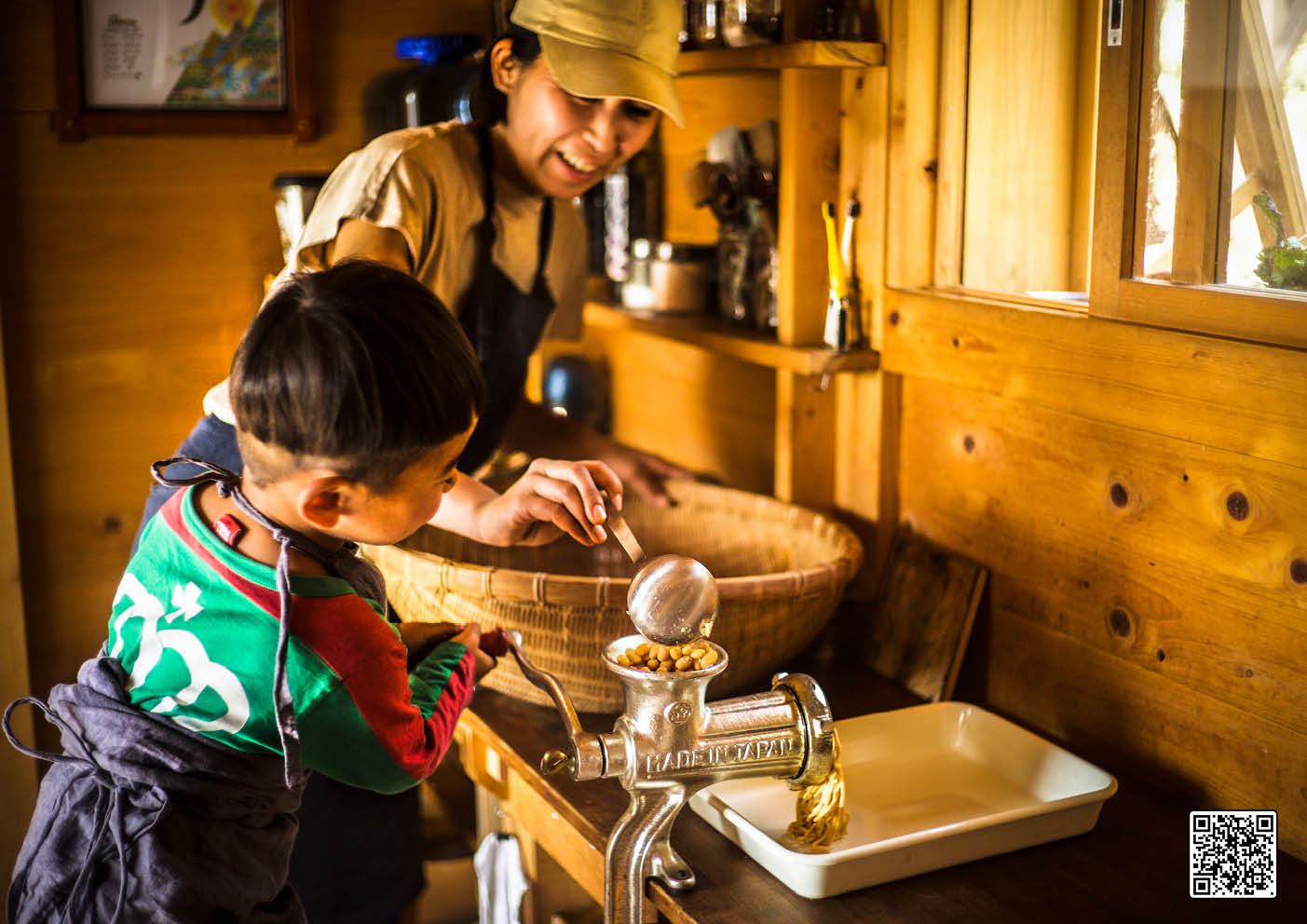
Soul food and preserving skills
For young Terra, mincing boiled soybeans to make miso is fun and interesting – not a chore. When we are having fun we are more open to learning, building connections and positive memories. The harvest’s energy is stored as miso, and the knowledge and skills are carried by Terra and Kei. The miso will release its energy, bringing people and ingredients together as it matures and is eaten.
Photo taken by Nobuaki Kita at Kurashinone Life and Permaculture in Okayama, Japan. See this short video about their journey.
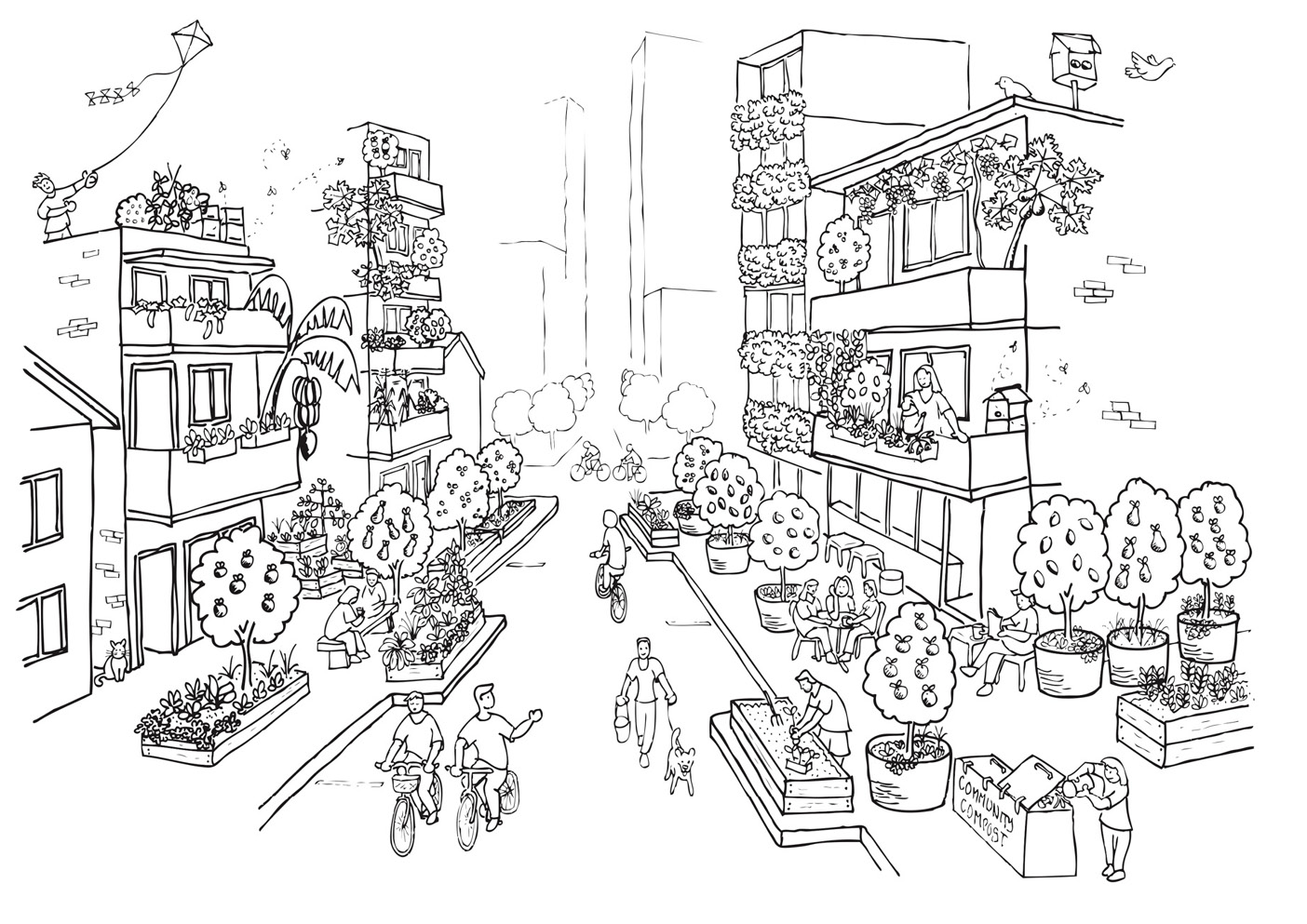
Urban retrofit
Even medium density urban spaces can make use of available sunlight to grow plants, produce food, provide shade, habitat, passive cooling, and soften the texture of the built form. There are plenty of people around to compost wastes, cultivate plants and animals and harvest what they produce. The vegetation helps to bring these spaces to a more human scale, with fewer cars, more street and roof top life, more walking and cycling, and more human connection.
Illustration by Rob Allsop from the book Earth Restorer’s Guide to Permaculture by Rosemary Morrow, Melliodora Publishing, 2022.
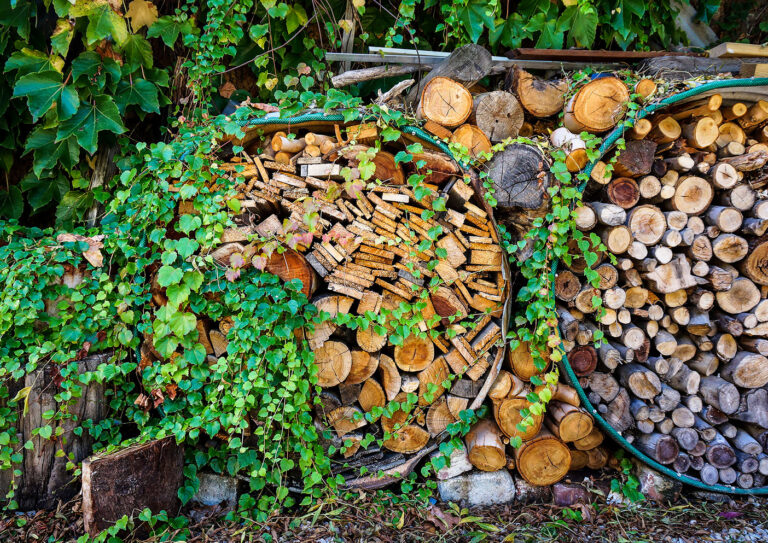
Salvaged streams of sunlight
Laura and Will have mastered the art of foraging urban wood to fuel their fire. By catching the stored solar energy in construction offcuts and green waste wood, they continue the age-old practice of using wood fires for warmth, cooking and hot water while adapting to the reality of their urban context. When we operate creatively as decentralised systems we can make good use of diverse and changing resource streams.
Photo taken by Shani Burdon at Tandanya Bioregion, Tusmore, Kaurna Country, South Australia
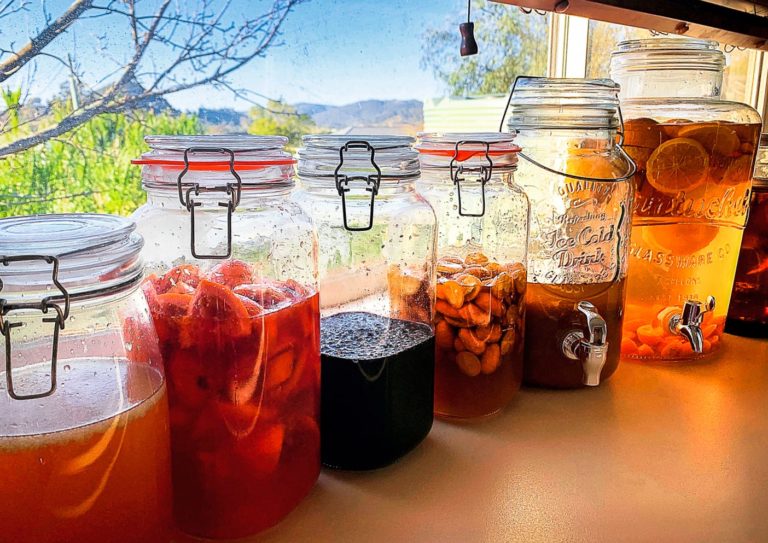
Bottled sunshine
The qualities of fresh fruit are slowly drawn into homemade champagne vinegar to make sweet vinegar shrubs for drinking, and also one jar of natural citrus cleaner. Alone and when combined with microbial cultures, the complex sugar‑rich bounty of fruit trees is an ally for celebration, good health and cleanliness. As we move toward local, polycultural food systems we learn to use and preserve the energy stored by plants in diverse and creative ways.
Photo taken by Nici Cooper at Limestone Permaculture in Stroud Road, NSW, Australia
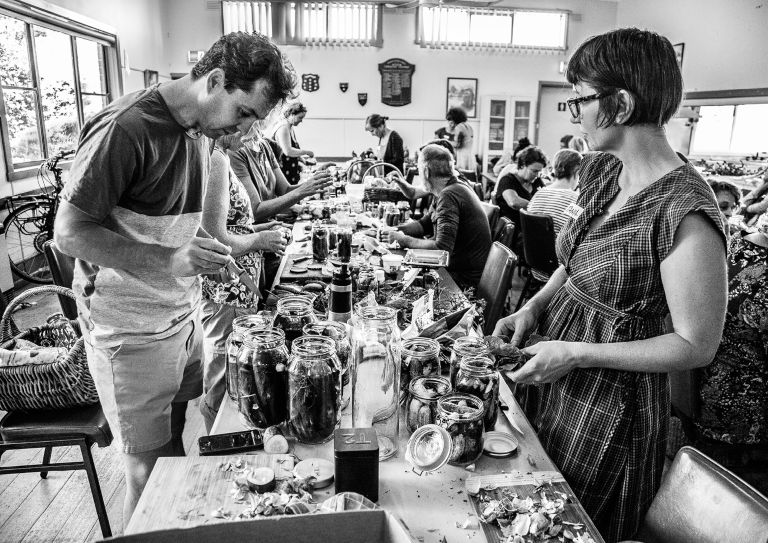
Getting into a pickle with the Culture Club
This free pickling and fermenting workshop is a monthly event at the Daylesford Town Hall, which disperses these skills through the local community. Participants either bring their own produce, or order from a local grower who grew the gherkin cucumber variety especially for this event. This lacto-fermentation technique preserves and enhances the nutritional value, enhances gut bacteria to improve digestion, and grows culture in the community.
Photo taken by Brenna Quinlan at Melliodora.
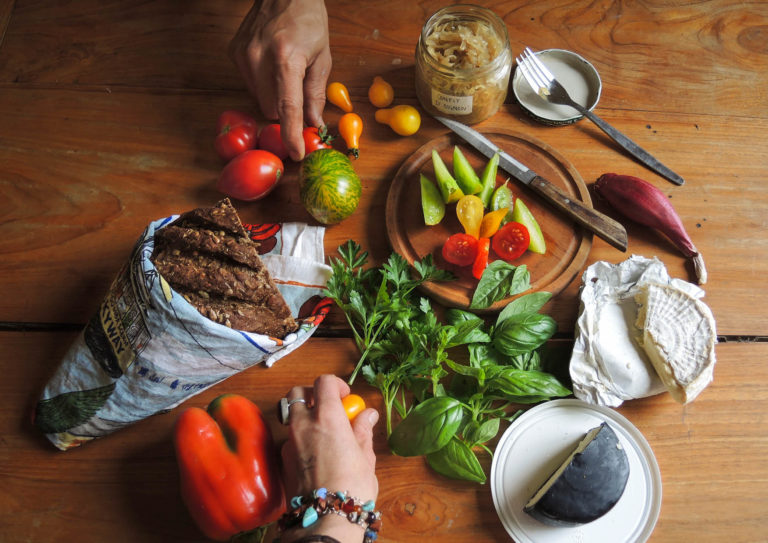
Using and preserving the seasonal abundance
Summer gardens can be highly productive. These delicious summer vegetables can be eaten fresh, and also preserved. Here they are combined with preserved onion and home made cheeses from spring milk. Regularly savouring a little of these preserves over the course of the year allows a close eye to be kept on stores of seasonal abundance to make them last through winter and spring, and to ensure they are all eaten by the new season, leaving none to waste.
Photo taken by Brenna Quinlan at Melliodora.
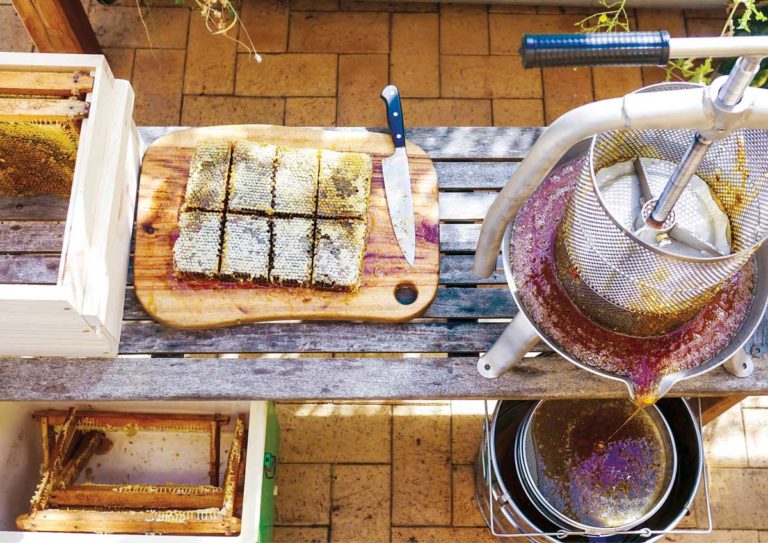
Harvesting the flowers
Warré beekeeping allows for surplus honeycomb, collected and stored by honey-bees, to be carefully harvested without disturbing the colony. Cut, crushed and stored in jars, this surplus energy is the goodness of thousands of local flowers made accessible. This rich food can be stored indefinitely and used as a sweetener, in fermented drinks or as a medicine. The remaining wax can be used for sealing inoculated mushroom logs, making skin creams, lip balm or candles.
Photo taken by Kirsten Bradley from the book Milkwood: Real skills for down-to-earth living.
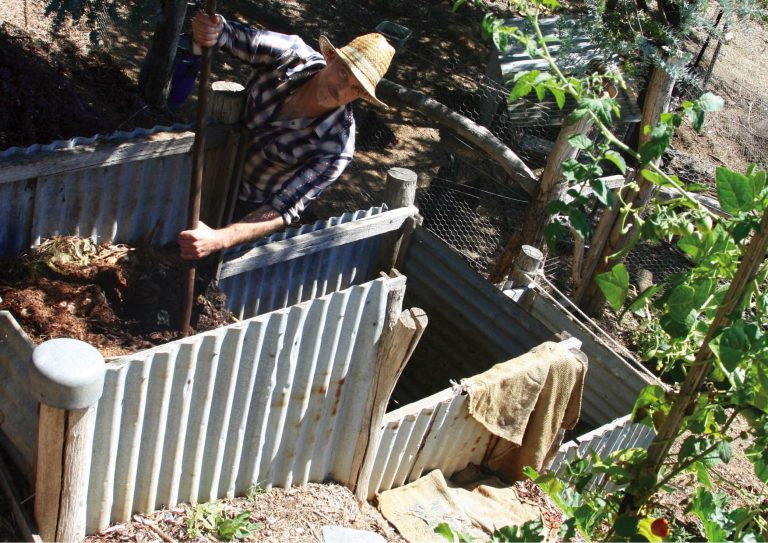
Gravity fed compost bays
This set of optimum sized compost bays uses the natural slope of the block to make compost turning easy. When the top bay (at house level) gets full, Joel removes the divider between bays, and rakes the compost into the next bay down with the assistance of gravity, turning and aerating the material. At each turn microbial action makes the compost heat up, resulting in a rich and well composted mix at the bottom for the nearby orchard and garden.
Designed by Cath James and Joel Meadows. Photo contributed by Lloyd Meadows.
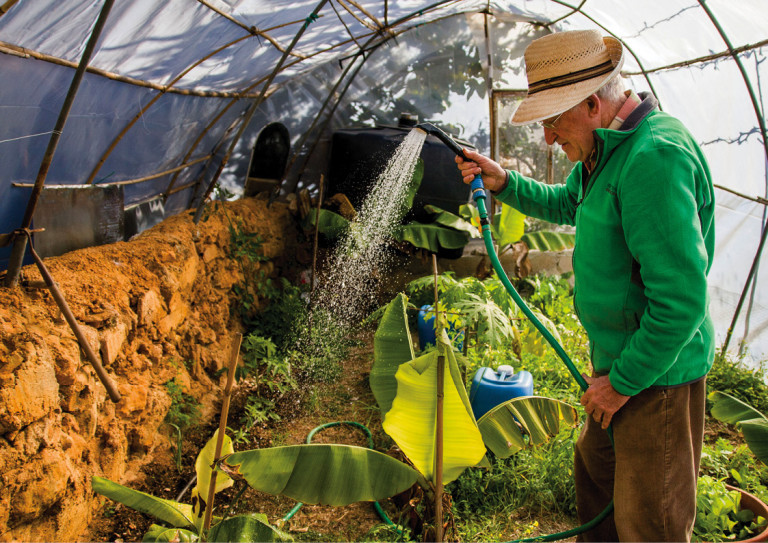
Cultivating a micro-climate for change
Juan Anton built his greenhouse using bamboo and rocks collected from his property. The sun facing wall stores heat during the day and releases it during the cool nights, preventing frost. The water tank and containers act in much the same way, allowing him to grow tropical plants in the Mediterranean climate. Juan shares much of what he has grown and learnt at his edible forest with dozens of visitors who stay over for group discussions that can last for several days.
Photo contributed by Hélène Legay
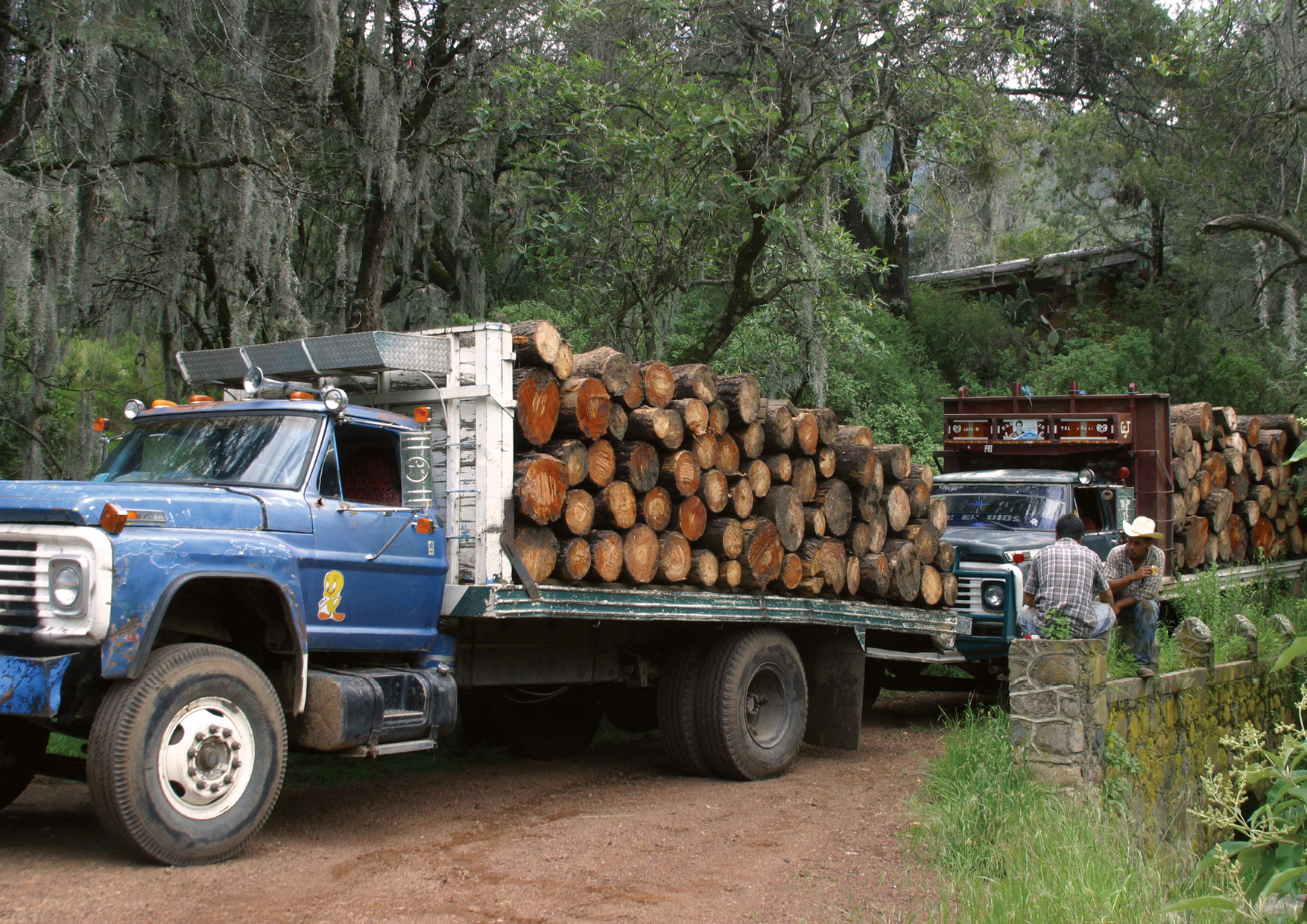
Sustainable harvesting from a sustainable source
High energy costs will drive growth in forestry for both fuel and structural material to replace steel, aluminium, plastic and other high embodied energy construction materials. This timber harvest from a 40 year old ecological forest restoration at El Pardo in Mexico uses more labour intensive management on a smaller scale that addresses sustainability issues. Reafforestation of degraded agricultural and grazing land captures and stores the energy of the sun with multiple benefits.
Photo contributed by David Holmgren
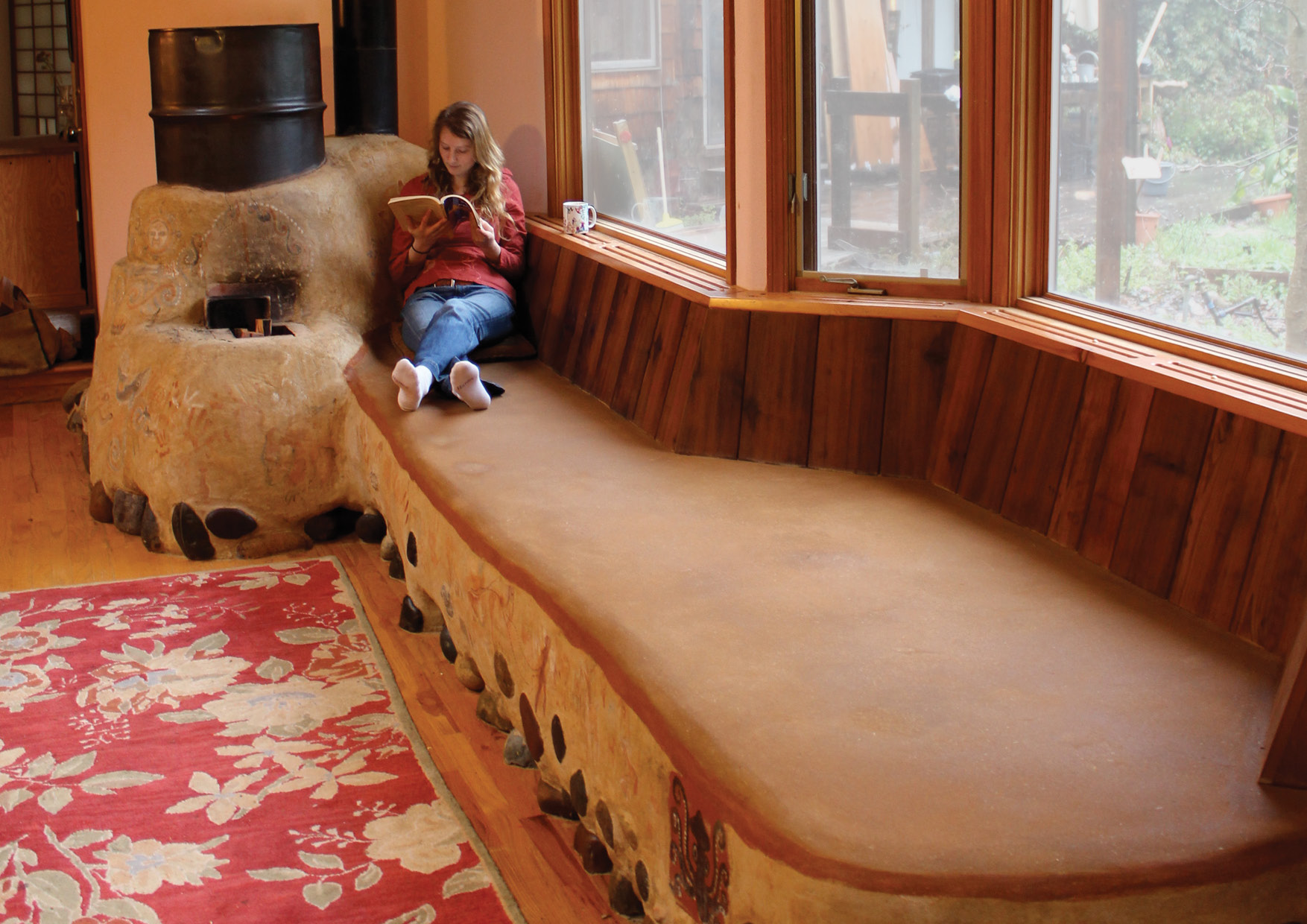
Heat people not the space
Thermal mass can be heated by the sun or on demand using systems like this rocket mass heater. The masonry holds hundreds of times more heat than air, storing it for longer, and releasing it at safe temperatures to keep people warm. This design incorporates a rocket stove and flue running through the masonry. Careful design and construction ensures that the small amount of fuel used is burnt hot and clean, while heat is soaked into the mass.
Photo by Calen Kennett, heater by Ernie and Erica Wisner
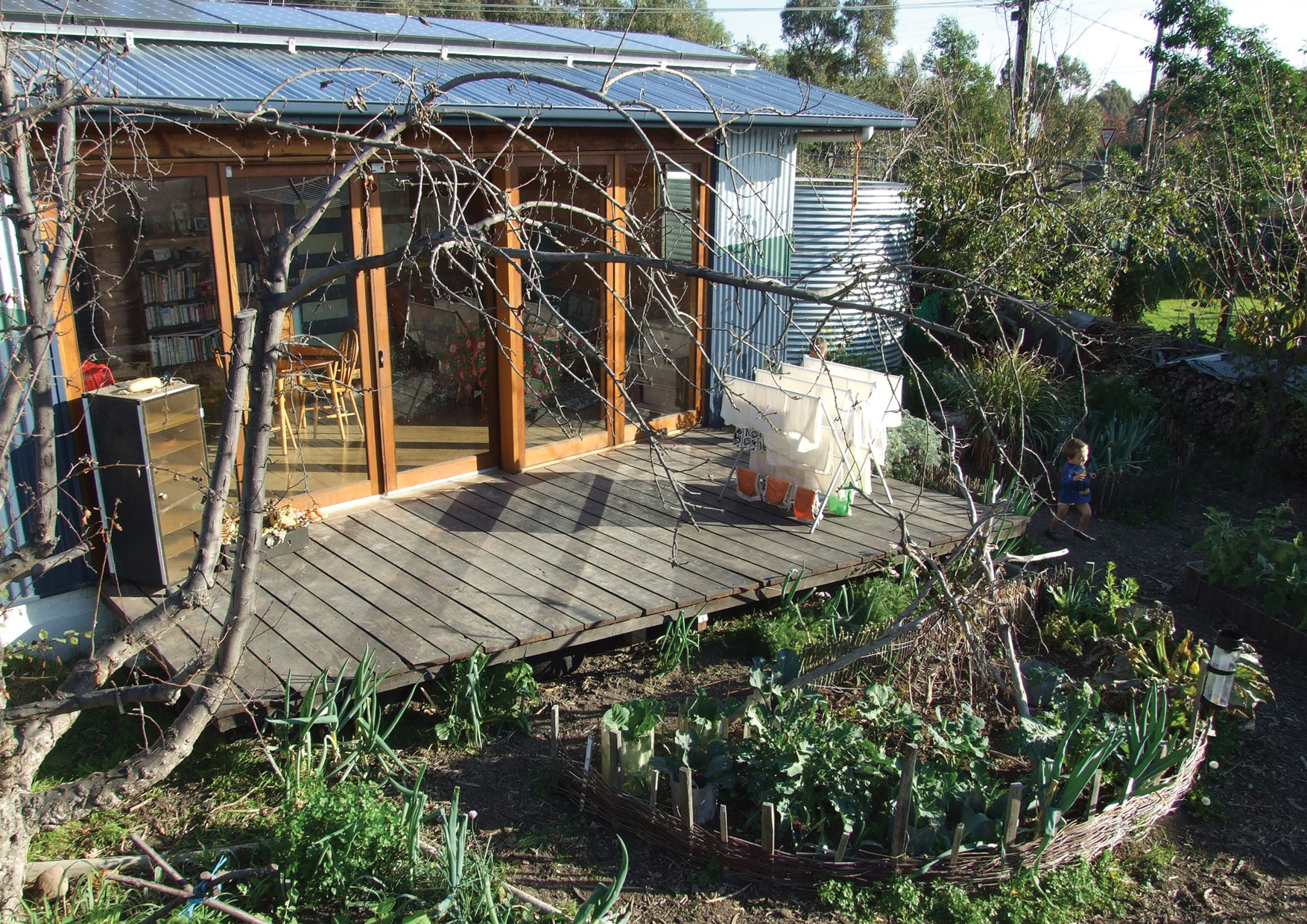
Making good use of the sun
During height of summer sunlight is shaded from Abdallah House’s living room windows; in the cooler months it streams through and heats the thermal mass of the floor, regulating temperature. The solar panels on the roof convert sun’s energy to electricity, while the vegetables in the garden transform it into food. The fruit trees also provide wood and materials for weaving, while water collected from the roof is stored in the tank and used to irrigate the garden using gravity.
Photo contributed by Richard Telford
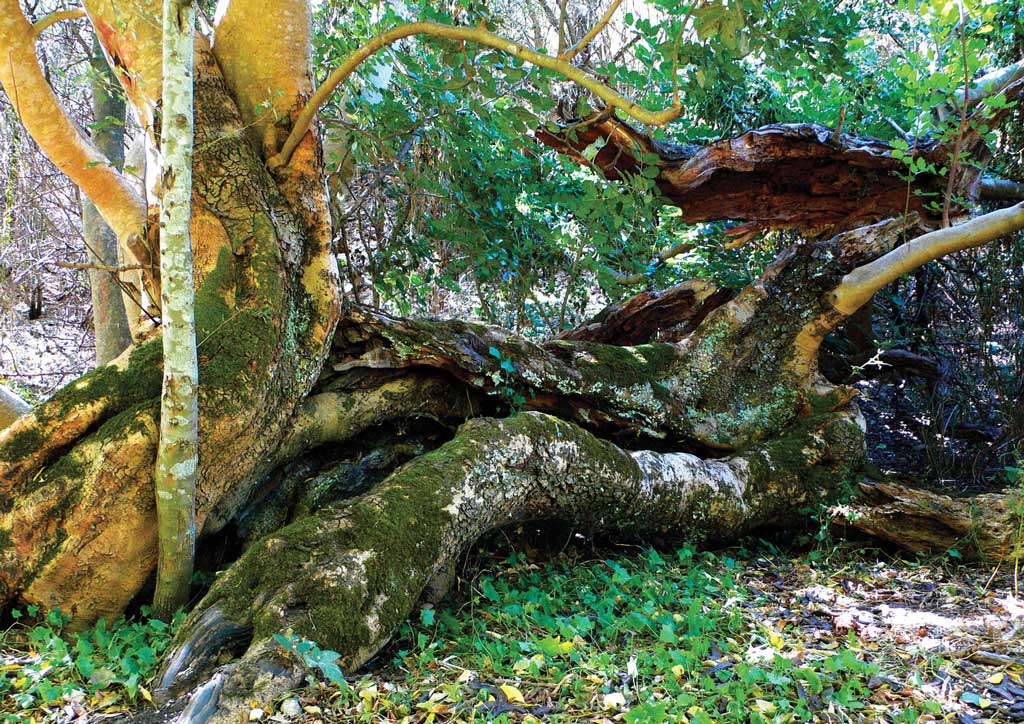
Old carob tree
Here the upper reaches of Brownhill Creek, in South Australia, supports a profusion of human food including; olives, grapes, prunes, figs and walnuts. This old carob tree, bent and broken, is offering shelter to new growth and still producing sweet pods. This ancient food tree helps to trap and hold sediment, draws from stream flow above and below ground, and uses sunlight to convert these resources into nutritious food.
Photo and accompanying text contributed by Joel Catchlove
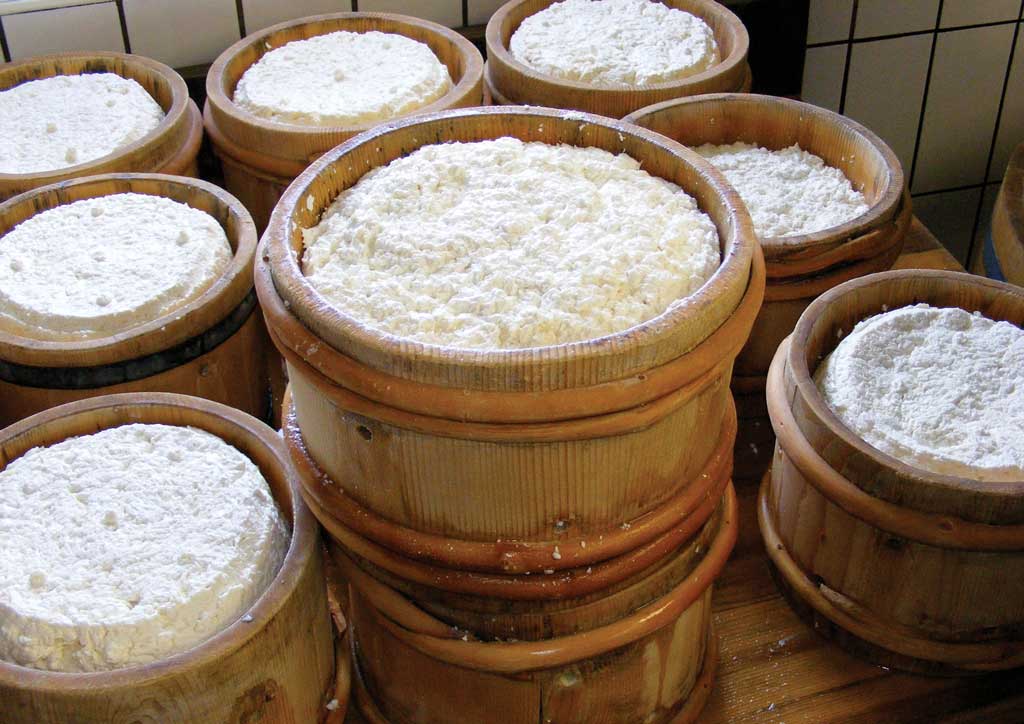
Catching and storing the goodness of the alpine meadow
In Montafon, farmers graze their cattle on alpine meadow pasture during summer and produce this Sura Kees (sour cheese). The raw milk and the wood of the vessels carry the microflora for natural fermentation. Most of the food value of the milk is caught and stored by the cheese for longer life and transport. “Cheese: milk’s leap towards immortality” [Clifton Fadiman].
Photographed in Montafon, Austria by Christoff Schneider.
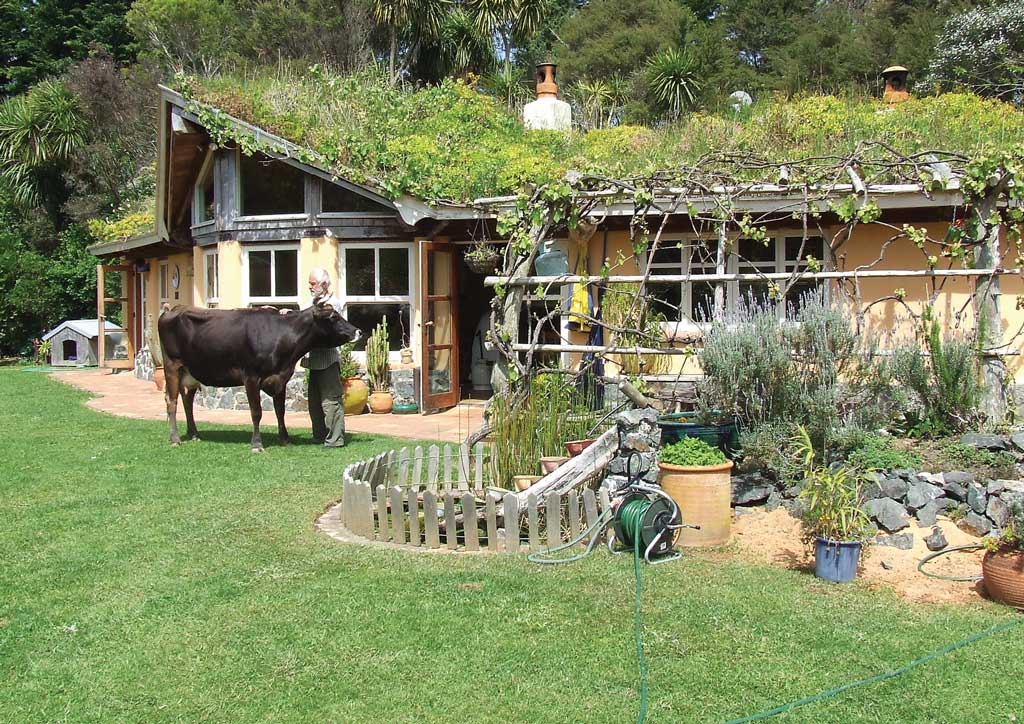
Joe Polaischer at Rainbow Valley Farm
Joe, a highly skilled and much loved craftsman and permaculture teacher, was himself a huge store of precious skills and knowledge. He is pictured here with many examples of energy caught and stored. The passive solar house that he and Trish Allen built, the well bred and cared for milking cow, kitchen garden, attached grape vine, the tree shelterbelt behind – all of these catch and store energy from sunlight.
Photographed at Rainbow Valley Farm in New Zealand by Christoff Schneider.
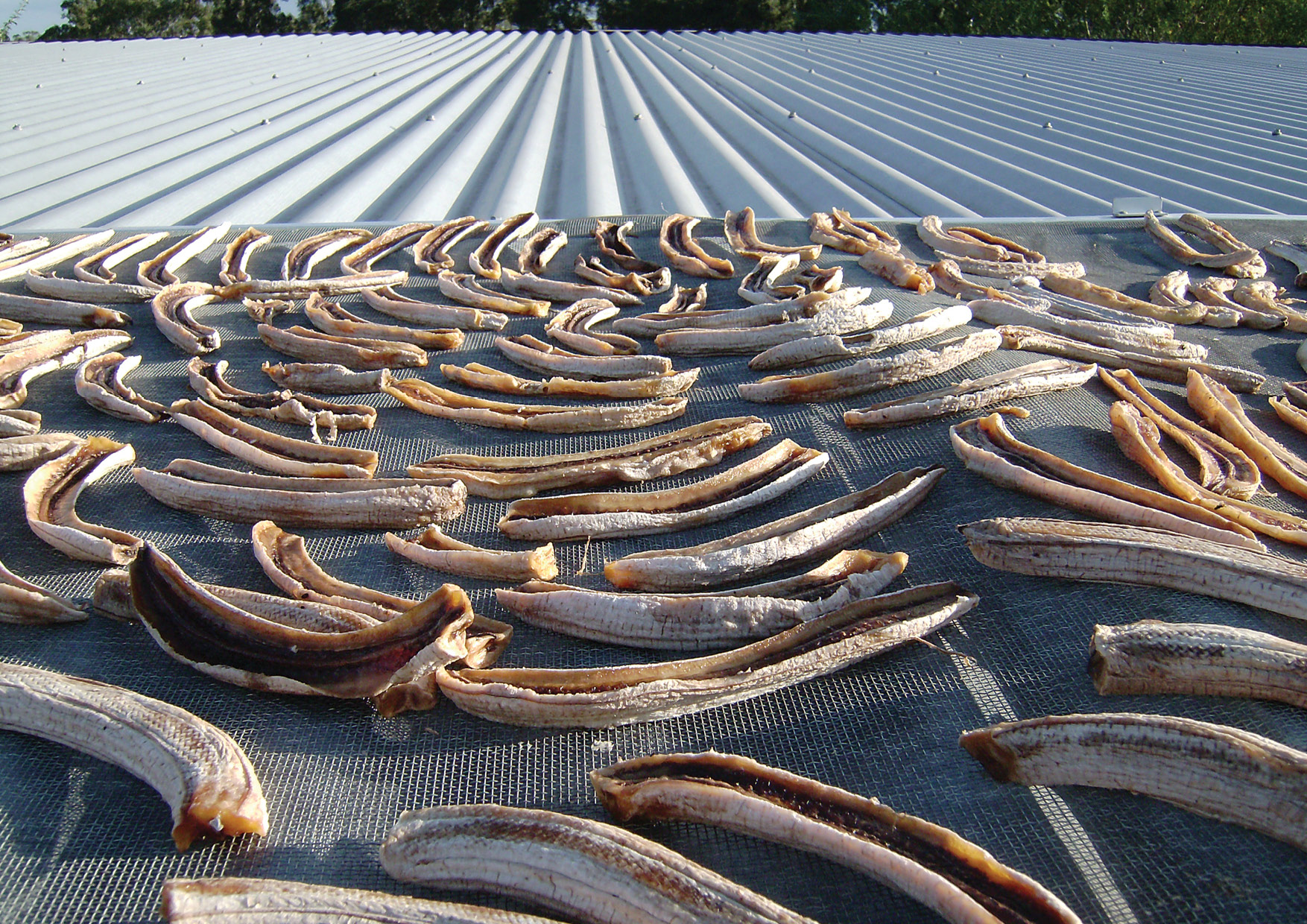
Dry bananas while the sun shines
Low tech solar drying using a salvaged window fly screen, and a roof. Bananas were so cheap and plentiful in Australia that very ripe bananas would often go to waste. Cyclones sometimes blow down exposed banana plants – Cyclone Yasi destroyed most of Australia’s banana crop in 2011. The resultant short supply and high prices remind us to catch and store surpluses when we can.
Photo contributed by Beck Lowe




